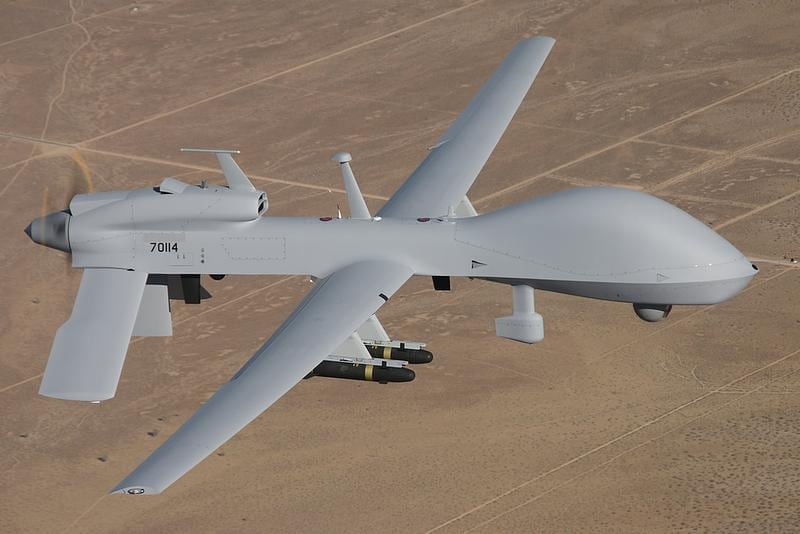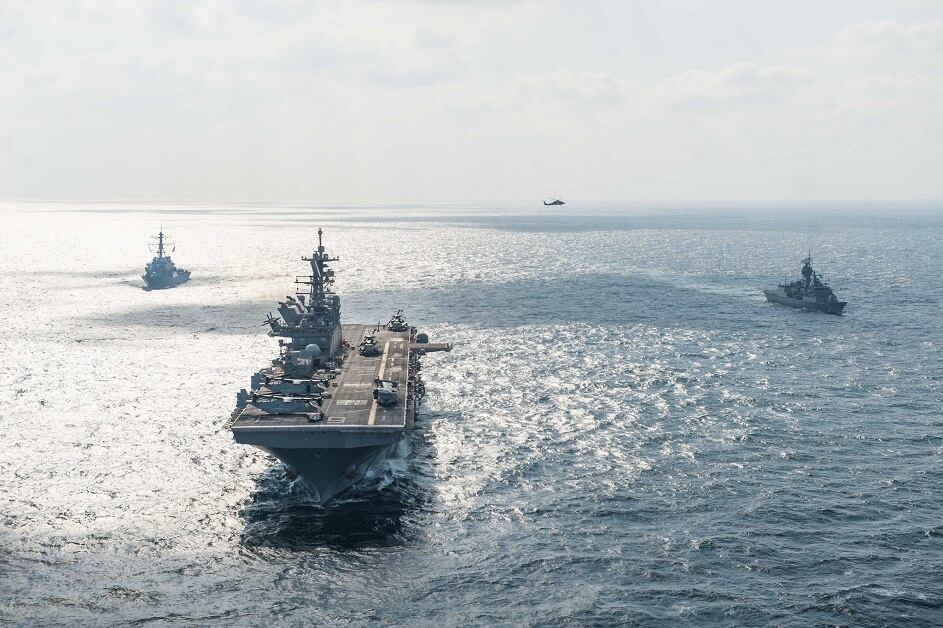The Marine Corps is reevaluating its requirements for a large unmanned aerial vehicle capability.
Top leaders have long expressed the need for a group 4 or 5 UAS capability that is organic to Marine Air Ground Task Force, or MAGTF.
Speaking to reporters following a keynote address at the West 2018 conference Feb. 7 in San Diego, California, Lt. Gen. Robert Walsh, commanding general of the Marine Corps Combat Development Command and Deputy Commandant for Combat Development and Integration, said the Marines need a unique capability that is different from what the joint force already has.
The main current group 4 and 5 UAS employed by the joint force include: the Air Force’s MQ-1 Predator and MQ-9 Reaper — both medium-altitude, long-range armed drones; the Air Force’s RQ-4 Global Hawk — a long-range, high-altitude intelligence, surveillance and reconnaissance asset; the Army’s MQ-1C Gray Eagle — the service’s variant of the Reaper; and the Navy’s MQ-4C Triton — that branch’s variant of the Global Hawk with initial operational capability slated for 2021.
RELATED

Given how coveted ISR is, most of these assets are employed at the theater level.
As Military.com reported, the Marines are looking to lease MQ-9s from contractor General Atomics to provide units deploying to Afghanistan overwatch without having to coordinate with the Air Force.
According to Walsh, one of the things the Marines are missing, especially from the landing helicopter assault ship and amphibious ready group marine expeditionary unit perspective, is a platform that can go out against a near-peer threat with long-range, airborne early warning, electronic warfare capabilities and ISR capabilities.
The initial capabilities document they wrote was all encompassing, he added, to potentially include a logistics capability as well.
When the Marines started to work this with contractors, the answers they got back were that the platform as defined is big, broad and going to be expensive.
Walsh said they’re trying to conduct a symposium with industry in the next month or two to refine the requirements before they roll out an analysis of alternatives.
“I’m hearing from industry, ‘You’re asking for too much; it’s going to cost you too much,’” he said. “So, I’m wondering why would I start the AoA if they’re already telling me that. We want to take the time, take a pause, get with them and start the AoA with the right requirements before we move forward.”
Mark Pomerleau is a reporter for C4ISRNET, covering information warfare and cyberspace.








